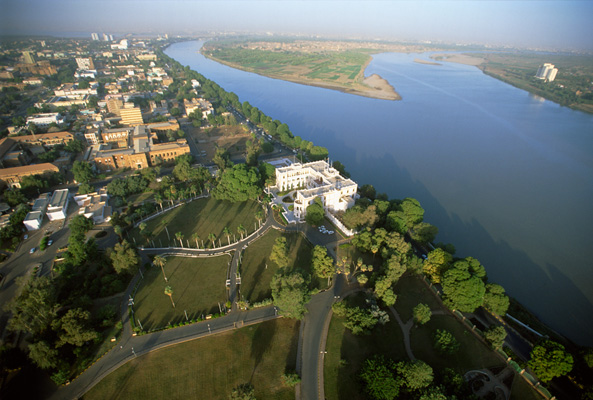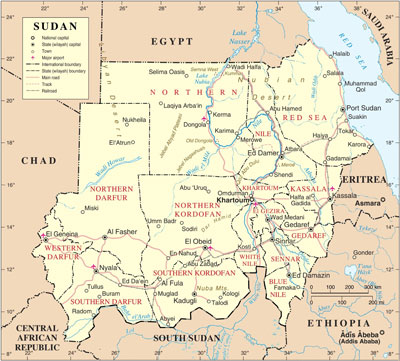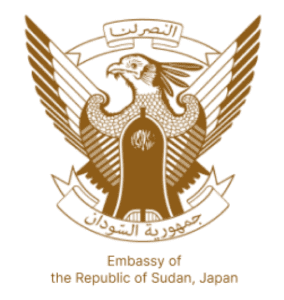COUNTRY PROFILE

The Republic of the Sudan is situated in northeast Africa. The country was the largest African country before the secession of South Sudan. Now, it ranks third after Algeria and the DR Congo and sixteenth at the world level. It shares common borders with seven countries across the Red Sea: The Central African Republic, Chad, Egypt, Eritrea, Ethiopia, Libya, South Sudan, and the Kingdom of Saudi Arabia. Sudan has an area of 1,861,484 sq km, with generally flat plains and a coastline of 875 km.
Capital
Khartoum, the capital of Sudan, lies at the confluence of two great rivers, the Blue Nile and the White Nile.


The People
The Sudan was a melting pot for the three major indigenous groups, the Nubian, Beja, and Fur, along with various other ethnic groups that settled or migrated to the Sudan in different eras. It is also true to note that the Sudanese are descendants of Afro-Arab/Semitic origin. The population of Sudan is estimated to reach 48 million. Although Arabic is Sudan’s lingua franca, Sudanese people speak various local indigenous languages. English is widely used and expressed as a second language.





Climate
Sudan lies within the African tropical zone. Its climate varies from rainy Savanna in the south to continental in the northern parts and Mediterranean in the eastern areas. From October to March, temperatures range between 16 and 30 degrees, with beautiful warm sunshine during daytime hours. Rain usually falls between May and August.







ECONOMY
The economic sector is the one that suffered most from the split of the country in July 2011, with South Sudan taking away almost two-thirds of the country’s oil production and revenues. Searching for compensation, Sudan is trying to diversify exports by inducing more domestic and foreign investments in agriculture, agro-industry, mining, and energy sectors. The country continues to export oil and the increasingly encouraging gold, copper, chromium, mica, marble, cotton, cotton waste and seeds, sesame, groundnuts, gum Arabic (acacia gum), sugar, raw sugar, ethanol, hibiscus, oil seeds, fruits (mango, grape, guava, lemon, banana, dates, melon, and others), grains, pulses, livestock, meat, leather, medical gas, vegetables (onion, garlic, beans), spices, and medicinal herbs (senna pods, henna, etc.), including China, India, Egypt, and prosperous countries in the Arab Gulf and Peninsula as significant trade partners.
The Sudan has, so far, used only 40 million acres of its arable land, which exceeds 200 million acres. 11 million acres are irrigated, and 29 million acres are rainfed. More water is abundant in the Nile and its tributaries, Sudan’s most precious natural endowment. Rainwater is estimated at 440 billion cubic meters per year. Efficient use of these available water resources requires the development of appropriate irrigation technologies and information on efficient irrigation methods, the determination of crop water requirements, irrigation intervals, and all other water harvesting techniques to serve the country’s new strategy for agricultural expansion. These programs may serve well in preserving the environment, enhancing food security, alleviating poverty, and even combating desertification in some semidesert areas—goals boldly targeted in international agendas destined for developing countries.
Recently, the economic liberalization policies, the strategic location of the country, the reasonably developed infrastructure, the advancement in the communication network, and the adoption of new investment-encouraging laws, a noticeable increase in the direct foreign investment in Sudan. The investment reforms include preferential treatment for foreign investors, exempting capital goods from VAT and customs, lowering the corporate tax rate, and improving the timeliness of customs clearances. The newly adopted Investment t 2021 Act ease investment procedures in order to attracts more foreign investment to the country.





POLITICAL DEVELOPMENT
The independence of Sudan was preceded by a transitional period, with the inauguration of the first parliament in 1954. On December 19, 1955, the Sudanese parliament declared Sudan’s independence unilaterally and unanimously. The British Government recognized the independence of Sudan on January 1, 1956.
1958, following a period of economic difficulties and political maneuvering that paralyzed public administration, Chief of Staff Major General Ibrahim Abboud overthrew the parliamentary regime in a bloodless coup d’état. He was forced by the first Sudanese popular uprising (the October Revolution) in October 1964 to step down.
Sudan enjoyed a second parliamentary period between 1965 and 1969. A second coup d’état took place on May 25, 1969, abolishing parliament, outlawing all political parties, and establishing a single-party system similar to the typical totalitarian regimes in Africa and the Arab world.
In 1972, the Addis Ababa Agreement ceased the war between the central government and the rebels in South Sudan before it erupted again in 1983.
On April 6, 1985, the second Sudanese popular uprising (the April Revolution) overthrew Nimiri’s regime with the help of the Army. A one-year transitional government composed of a Military Council and a government of technocrats paved the way for free multi-party elections that brought, in June 1986, Prime Minister Sadiq al-Mahdi’s coalition government with the Umma Party, the Democratic Unionist Party (DUP), the National Islamic Front (NIF), and four southern parties. Successive weak coalition governments were, unfortunately, unable to maintain political stability until June 30, 1989, when President Omer Elbashir took power.
On January 9, 2005, the Comprehensive Peace Agreement (CPA) was signed in Nairobi, Kenya, between the government of Sudan and the rebels of South Sudan. As stipulated in the agreement, South Sudan enjoyed an autonomous regional government and a considerable share of the “National Unity” central government’s portfolios during 2005–2011. Oil revenues were shared evenly between the North and South. In January 2011, South Sudan voted overwhelmingly for secession. On July 9, 2011, South Sudan became an independent, sovereign country.
In 2010, general elections were held shortly before the referendum on South Sudan. President Omer Hassan Ahmed Elbashir won the Republic of the Sudan presidency with 6,901,694 votes (68.24 %). Mr. Yasir Saeed Arman, the unofficial candidate of the SPLM, ranked second with 2.193.820 (21.69%). In the then semi-autonomous South Sudan, President Silva Kiir Mayardit won the presidency of the government of South Sudan with 92.99%. The National Congress Party overwhelmingly won the legislative elections.
On January 27, 2014, President Omer Elbashir launched an unconditional national dialogue process aimed at revising all aspects of political life, making constitutional reforms to pave the way for a free multi-party election in 2015, and putting an end to the unrest in the South Kordofan, Blue Nile, and Darfur areas. All political affiliations in the country widely welcomed the initiative, and is gaining more and more attention from the international community.
The Glorious December Revolution in December 2018, protests against increased commodity prices particularly bread, erupted in the northeastern region of Atbara. Within days, protests had spread to the capital, Khartoum, and demands soon shifted to calls for al-Bashir to step down. Sudan’s military removed al-Bashir from power on April 11, 2019, suspended its constitution, and closed its borders and airspace. The former president, Bashir, has been replaced by a transitional military council. Elections were scheduled for 2023 after civilians and military factions agreed to share power in a three-year transition. Under Prime Minister Abdallah Hamdok, a council of ministers was formed. A sovereign transitional council composed of leading military and civilian figures is formed three days after a constitutional declaration is signed. Sudan signed a landmark peace deal with an alliance of rebel groups in October 2020.


